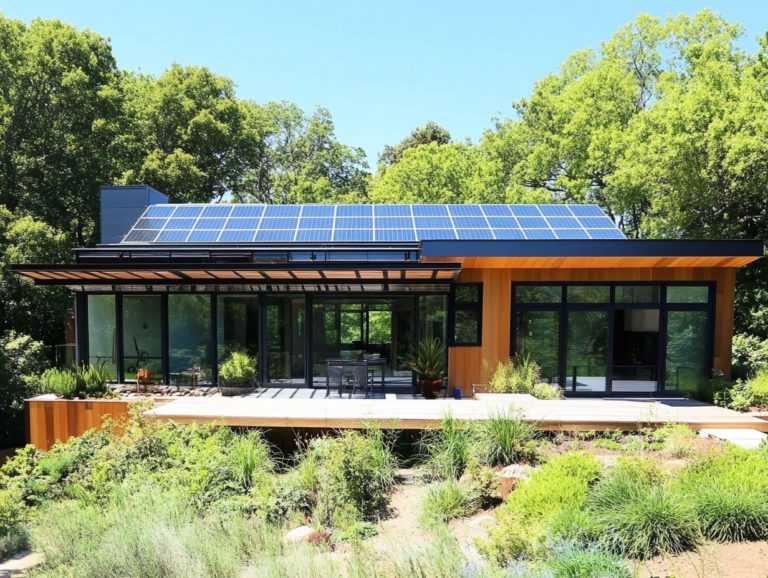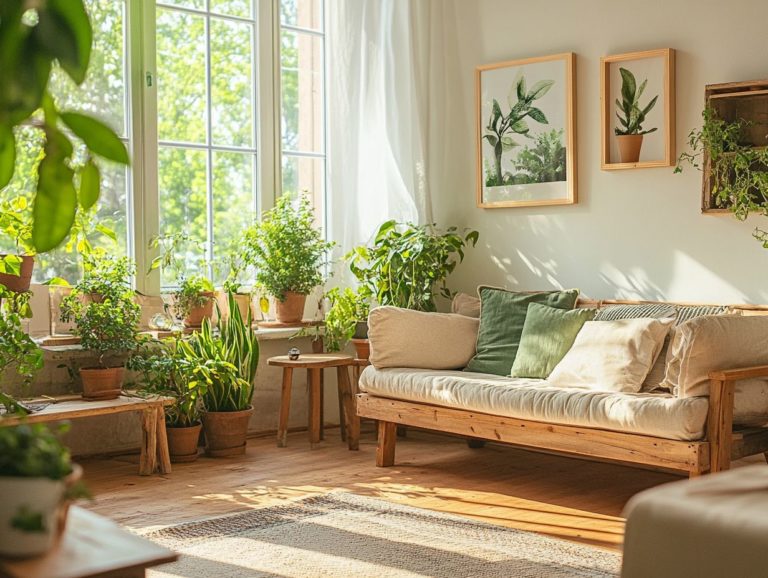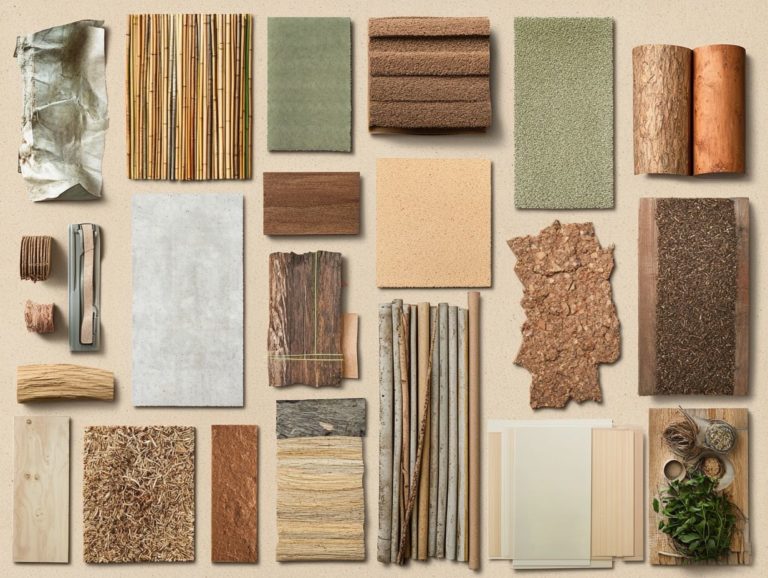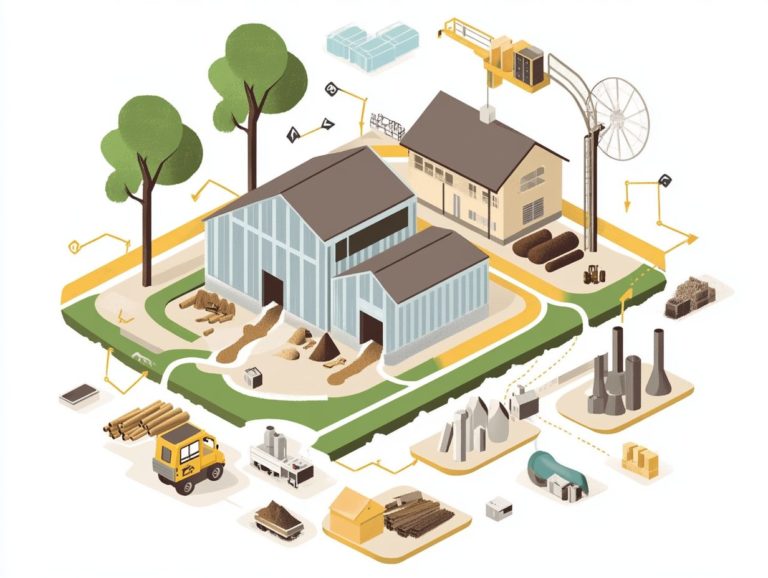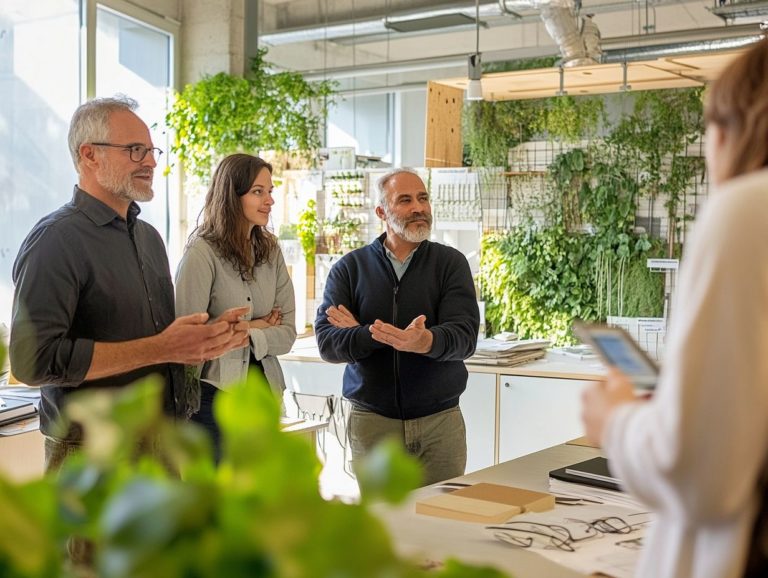The Future of 3D-Printed Sustainable Homes
The concept of 3D-printed homes is revolutionizing your perspective on sustainable living and affordable housing.
These innovative structures promise a smaller environmental footprint while delivering cost efficiency and remarkable design flexibility.
Yet, the path to widespread adoption is not without its hurdles, including regulatory red tape and technological constraints.
Dive into the benefits, challenges, and inspiring examples of 3D-printed sustainable homes, and ponder what the future may hold for this groundbreaking approach within the housing industry.
Contents
- Key Takeaways:
- What are 3D-Printed Homes?
- The Benefits of 3D-Printed Sustainable Homes
- The Challenges of Implementing 3D-Printed Sustainable Homes
- Current Examples of 3D-Printed Sustainable Homes
- The Future of 3D-Printed Sustainable Homes
- Frequently Asked Questions
- What are 3D-printed sustainable homes?
- How does 3D printing make homes more sustainable?
- What are the benefits of 3D-printed sustainable homes?
- How advanced is the technology for 3D-printed sustainable homes?
- What challenges do 3D-printed sustainable homes face?
- What does the future hold for 3D-printed sustainable homes?
Key Takeaways:
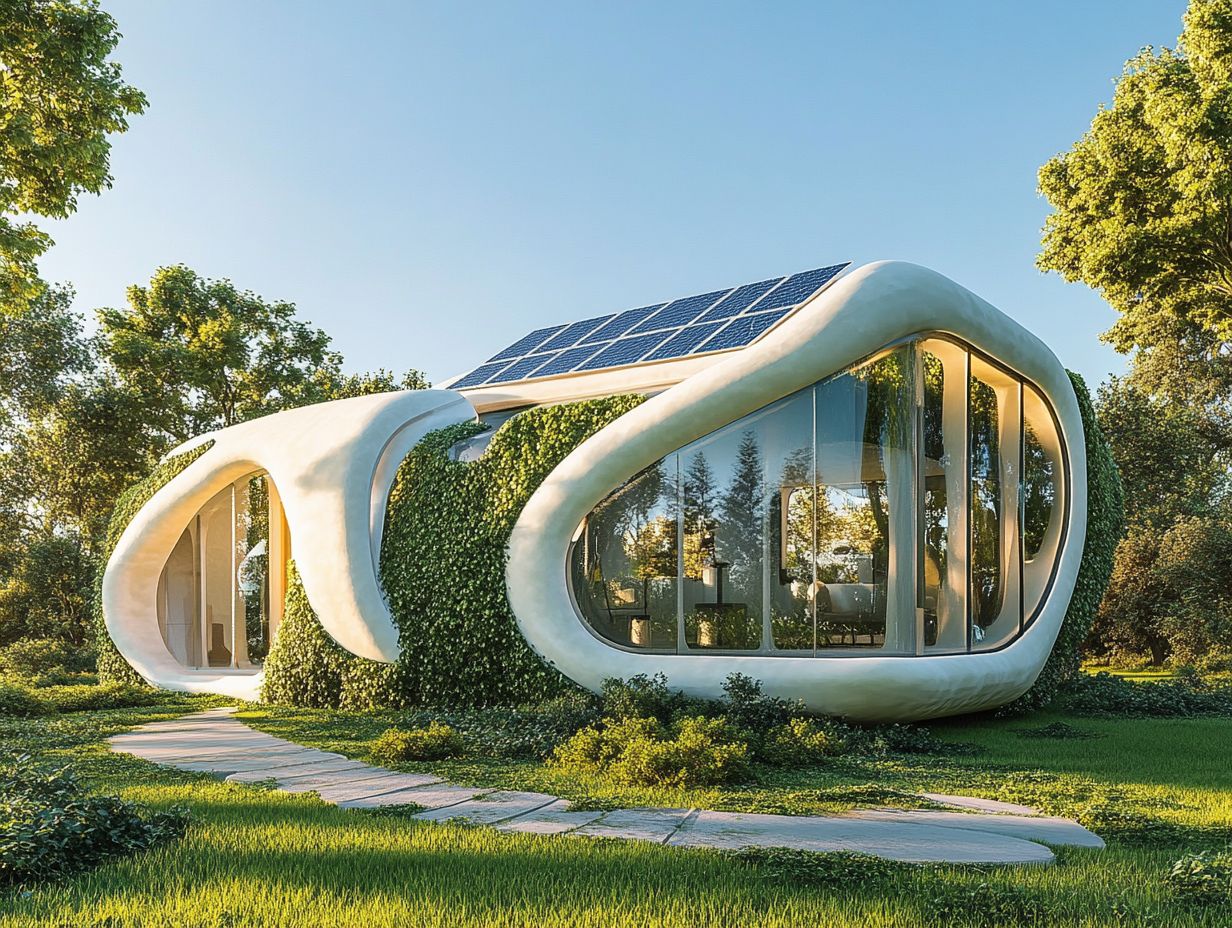
3D-printed sustainable homes offer numerous benefits, such as reducing environmental impact and cost efficiency. However, challenges in regulations and technology must be addressed for widespread implementation. The future of 3D-printed sustainable homes is bright and full of exciting possibilities for the housing industry.
What are 3D-Printed Homes?
3D-printed homes stand as a groundbreaking solution to the pressing housing crisis, using advanced 3D printing technology to craft sustainable and innovative living environments.
Pioneering companies like BioHome3D are leading the charge in this transformative approach to housing development, delivering designs that are both structurally robust and environmentally conscious.
By incorporating renewable materials and significantly cutting construction costs, these homes meet the urgent demand for affordable housing while reducing the carbon footprint linked to traditional construction methods.
The Benefits of 3D-Printed Sustainable Homes
The benefits of 3D-printed sustainable homes reach far beyond their striking appearance; they offer transformative effects on the construction industry and housing development at large.
By embracing innovative design and renewable building materials, these homes address pressing challenges such as rising construction costs and labor shortages. The carbon dioxide emissions from traditional building methods can be drastically reduced, paving the way for a more environmentally friendly future in housing solutions.
Environmental Impact
The environmental impact of 3D-printed sustainable homes is truly remarkable. These structures are designed to use renewable materials that align with your eco-conscious values.
Unlike conventional building methods, 3D printing significantly reduces construction waste and champions environmentally friendly practices, which are essential in today s world.
By incorporating materials like wood fibers and bioresins, this cutting-edge technology enhances energy efficiency in ways you might not have imagined. These alternatives boast a lower carbon footprint compared to traditional concrete and minimize reliance on fossil fuels during production.
The precision of 3D printing enables optimized designs that improve thermal insulation, effectively lowering your energy consumption for heating and cooling. In the housing industry, embracing such sustainable practices leads to significant waste reduction, transforming potential scrap into valuable, reusable resources.
This not only helps preserve the environment but also sets a new standard for eco-friendly construction that you can feel proud of supporting.
Cost Efficiency
Cost efficiency stands out as a remarkable advantage of 3D-printed homes, enabling you to significantly lower construction costs while tackling the persistent labor shortages affecting the construction industry.
By automating the building process and utilizing cutting-edge materials, 3D printing allows for the production of affordable housing units at an unprecedented scale. This technology speeds up construction and changes how we think about housing projects.
Unlike traditional construction methods, which often lean heavily on manual labor and intricate logistics, 3D printing requires fewer workers and less time to complete each endeavor. Consequently, you can enjoy a reduction in labor costs that has a profound impact on your bottom line.
Over time, these savings translate into more accessible and affordable prices for homeowners. Ultimately, the long-term financial benefits promote a more sustainable market, encouraging continued investments in innovative construction technologies.
Customization and Design Flexibility
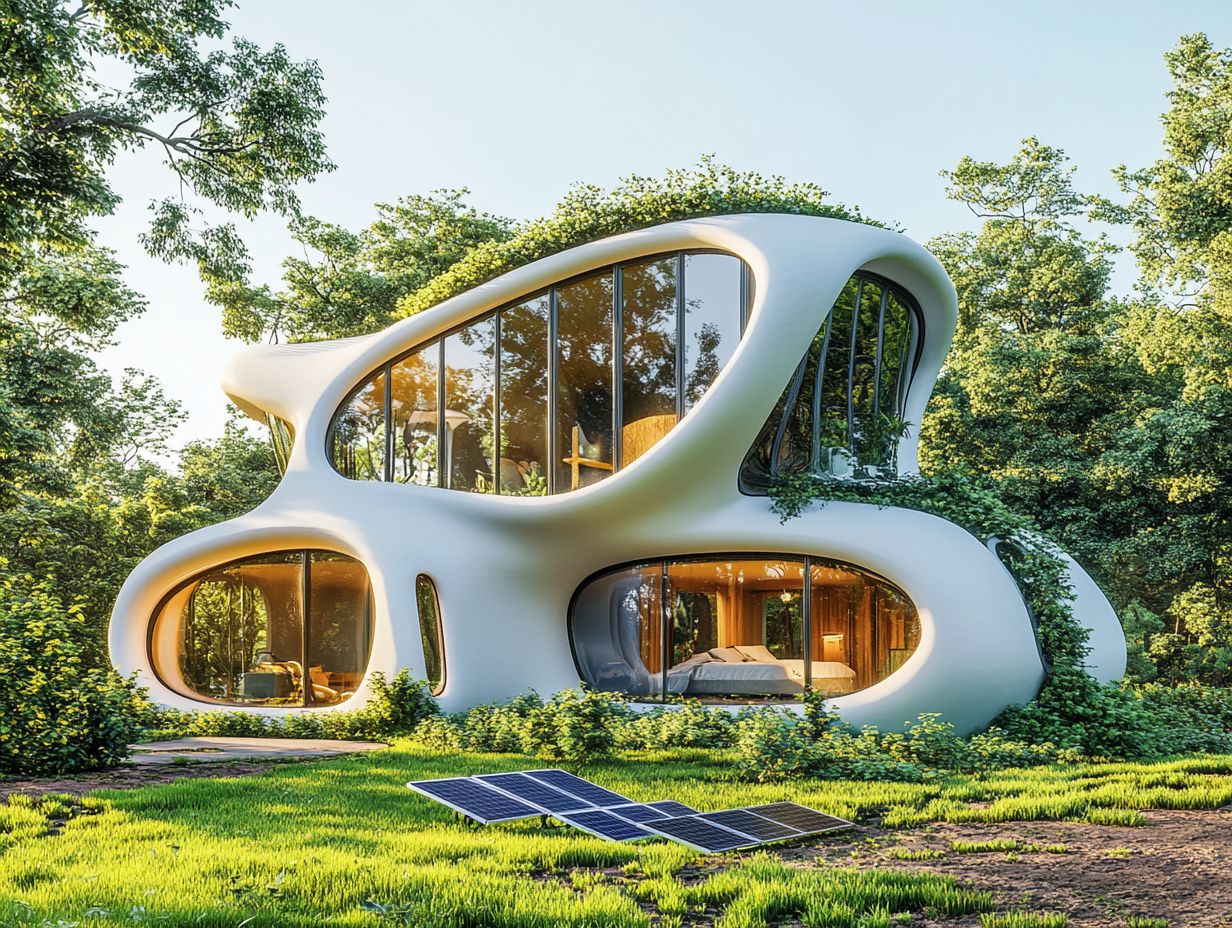
Customization and design flexibility are standout features of 3D-printed homes, offering you innovative design solutions that cater to your unique needs and preferences. This flexibility creates sustainable housing options that align beautifully with both your environmental goals and aesthetic desires.
By harnessing advanced software and the latest 3D printing technologies, architects can create one-of-a-kind prototypes that challenge the limits of traditional construction. Layering materials with precision, they craft housing structures designed to meet your specific requirements while optimizing energy efficiency.
These distinctive designs often incorporate eco-friendly materials, which minimize waste and reduce energy consumption. As a result, you may feel more satisfied with a living space tailored just for you, fostering a sense of ownership and comfort that enhances your daily life.
This process also supports sustainability while elevating the overall quality of life for those who call these innovative homes their own.
The Challenges of Implementing 3D-Printed Sustainable Homes
While the advantages of 3D-printed sustainable homes are compelling, you ll encounter several challenges that could impede their widespread adoption.
Regulatory hurdles and outdated building codes often stand in the way of innovation in the construction industry, stifling the growth of this promising technology.
Sustainability Challenges
Regulatory Hurdles
Regulatory hurdles pose a considerable challenge to the advancement of 3D-printed homes. You may find that current building codes often fail to keep pace with technological innovations. These outdated regulations create friction between innovation and compliance within the construction industry.
When regulations lag behind rapid technological growth, it stifles creativity and limits your ability to employ more efficient and sustainable methods. Many in the industry navigate a complex web of compliance requirements that often overlook the unique aspects of 3D printing.
Government oversight sometimes lacks the necessary expertise to adequately assess these new building techniques, leading to unwarranted delays and uncertainties. To overcome these challenges, it s essential for stakeholders like you to advocate for a revision of existing building codes that embrace innovative materials and methods.
Join the movement for modern building codes! By encouraging progressive policies that prioritize safety and sustainability, you can play a role in fostering a more conducive environment for innovation. With a focus on collaboration, policymakers can bridge the gap between regulations and innovation in the construction sector.
Technological Limitations
Technological limitations of current 3D printing methods present notable challenges when constructing sustainable homes. These limitations impact both the variety of building materials available and the overall efficiency of production, hindering your ability to scale 3D printing practices within the construction industry.
The compatibility of materials often raises concerns about structural integrity and durability, complicating the adoption of innovative designs by builders.
Current machines might lack the precision and versatility necessary to work with a diverse range of materials, restricting your creative possibilities in this evolving landscape.
However, significant advancements are on the horizon. Researchers and companies focus on enhancing machine capabilities and exploring new composite materials that could improve durability while minimizing waste. These innovations hold the promise of strengthening the construction process and fundamentally transforming how sustainable homes are conceived and built in the near future.
Current Examples of 3D-Printed Sustainable Homes
Current examples of 3D-printed sustainable homes highlight the remarkable potential of this technology. Several notable projects are transforming the housing landscape.
Initiatives led by organizations like Habitat for Humanity, coupled with groundbreaking companies such as BioHome3D and ICON, showcase the versatility and adaptability of 3D-printed homes in tackling the pressing housing crisis.
Notable Projects and Success Stories
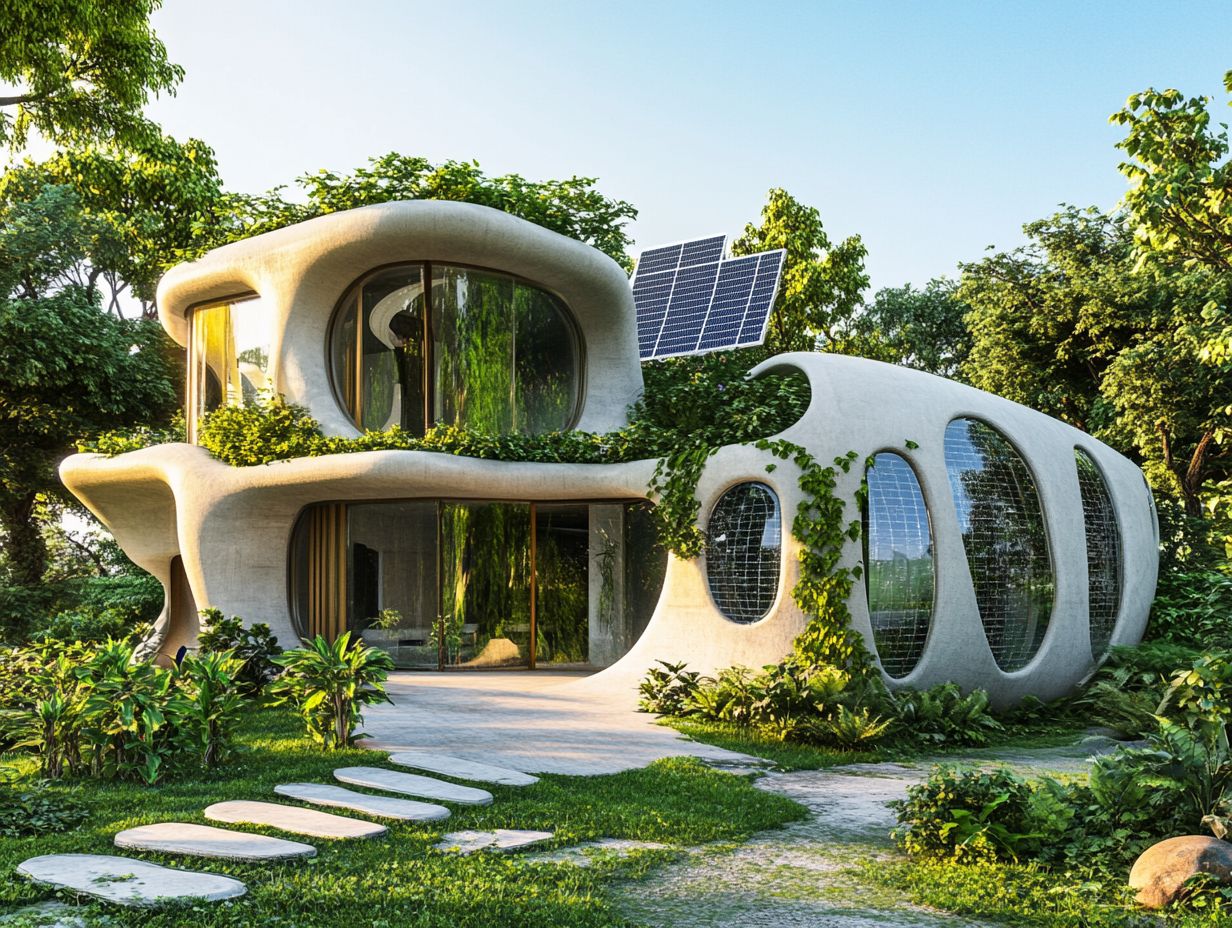
Among the standout projects in 3D printing, the innovations by BioHome3D and ICON capture attention with their cutting-edge designs and community-oriented approaches. These initiatives illustrate the potential of 3D printing in crafting sustainable housing solutions while addressing urgent social issues like affordability and accessibility.
For example, ICON collaborated with Habitat for Humanity to construct a 3D-printed home in Austin, Texas. This project had an astonishing build time of just 24 hours and significantly reduced costs.
BioHome3D showcases a remarkable combination of eco-friendly materials and energy-efficient features. This prompts local governments to reconsider their housing strategies. These groundbreaking efforts provide immediate shelter and lay the groundwork for future sustainable housing initiatives, fostering a broader movement towards 3D printing as a legitimate solution to global housing challenges.
The Future of 3D-Printed Sustainable Homes
3D-printed sustainable homes are about to explode onto the housing market! This revolution will transform the housing industry with innovative designs and substantial reductions in carbon dioxide emissions.
As more stakeholders recognize this technology’s transformative potential in tackling the housing crisis, we can expect a surge in investment and development within this field.
Predictions and Possibilities
Predictions for the future of 3D-printed homes suggest a swift evolution in technology and application, with innovative design becoming the standard in sustainable housing solutions.
The construction industry will embrace these advancements, leading to more efficient and cost-effective building practices.
As materials and techniques continue to advance, experts foresee a growing adoption of bio-based materials, which lessen environmental impact and enhance durability.
Imagine integrating smart technology into 3D printing, allowing for unparalleled customization in home designs to meet the unique needs of various communities.
This shift could influence both affordability and accessibility in housing, making a meaningful change in society.
With significantly reduced construction time and waste, this evolution will make housing more readily available for diverse populations.
Potential Impact on the Housing Industry
The impact of 3D printing on the housing industry is revolutionary, especially in addressing the ongoing housing crisis and labor shortages in traditional construction methods.
This technology promises to make homeownership more attainable by significantly cutting construction costs and streamlining the building process.
As the technology advances, expect it to dramatically reduce the time needed to build homes, enabling quicker responses to housing demands. This rapid development is essential in areas experiencing acute shortages, where conventional building methods can take months or even years.
Embracing 3D printing in housing not only alleviates labor challenges but also promotes sustainable materials, fostering environmentally responsible practices.
This innovative approach could reshape the housing landscape, improving living conditions and providing greater equity in housing access across diverse communities.
Frequently Asked Questions
What are 3D-printed sustainable homes?
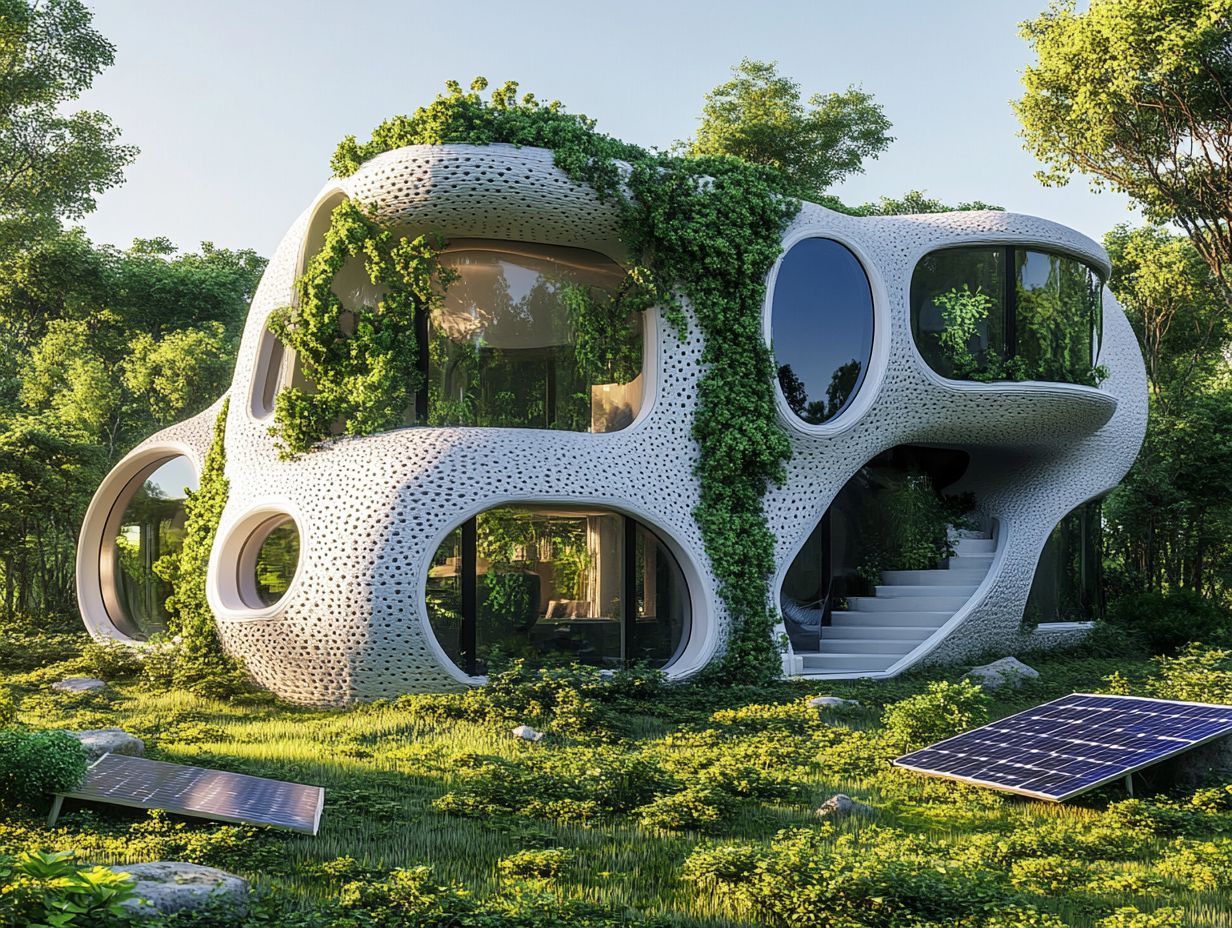
3D-printed sustainable homes are houses constructed using 3D printing technology and eco-friendly materials. The goal is to minimize environmental impact while promoting sustainability.
How does 3D printing make homes more sustainable?
3D printing allows for precise and efficient use of materials, reducing waste and minimizing the carbon footprint of construction. It enables the use of sustainable materials, such as recycled plastic and biodegradable substances.
What are the benefits of 3D-printed sustainable homes?
3D-printed sustainable homes can be built faster and at a lower cost. They are more energy-efficient and durable, and they have a smaller impact on the environment.
These homes could help solve housing shortages in resource-limited areas.
How advanced is the technology for 3D-printed sustainable homes?
3D printing for homes is still new but has advanced significantly. Companies worldwide are working hard to develop sustainable housing solutions.
What challenges do 3D-printed sustainable homes face?
A major challenge is the lack of specific regulations and building codes. There are also concerns about the long-term durability and the ability to build many homes quickly.
What does the future hold for 3D-printed sustainable homes?
Exciting advancements lie ahead for 3D-printed sustainable homes! Technology continues to evolve, and the demand for eco-friendly housing is on the rise.

